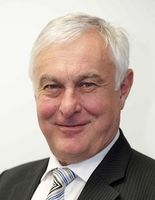Urology Bay of Plenty Limited provides treatment for men, women and children with any urological condition ranging from prostate cancer to kidney, testicular or bladder conditions. Click on the links to find information about our treatment of specific urological conditions in men, women and children.
We are committed to world class surgical techniques and technology backed by an experienced and caring team of health professionals.
The team at Urology Bay of Plenty are here to guide you through your treatment with caring support and clear communication. We understand illness can be a time of confusion and uncertainty and we try to make sure you have access to all the advice you need, through our team and our close relationships with a number of urology support groups.
The hub of Urology Bay of Plenty operates from Virtuoso at 850 Cameron Road, Tauranga, with a second facility at Harrington House, Harington Street, Tauranga.
What is Urology?
Urology is the branch of medicine that looks at diseases of the urinary system in females and the genitourinary system (urinary system plus genital organs) in males. The urinary system is made up of the:
- kidneys (where urine is formed from material filtered out of the blood)
- ureters (tubes that carry urine from the kidneys to the bladder)
- bladder (a balloon-like organ that stores urine)
- sphincter muscles (muscles around the opening of the bladder into the urethra)
- urethra (the tube that carries urine to the outside of your body).
The male genital organs include the penis, scrotum and prostate gland. The prostate is a walnut-sized gland located between the bladder and the penis and in front of the rectum. The urethra passes through the centre of the prostate. A doctor who specialises in disorders of the urinary system and also the male reproductive system is known as an urologist. A doctor who specialises in kidneys and their function is called a nephrologist.
What is Laparoscopic Surgery?
Laparoscopic (or keyhole) surgical procedures are performed through several small cuts (incisions) usually only 5-10mm long, rather than through one large incision.
A long, narrow surgical telescope (laparoscope) that has a tiny camera and light source attached is inserted through one of the incisions so that the surgeon can view the inside of the body on a TV monitor.
The surgeon then passes specially designed surgical instruments through the other incisions and carries out the procedure using the TV monitor to guide the instruments.
Laparoscopic surgery is usually associated with less blood loss during surgery and less pain and scarring following surgery. In most cases, time spent in hospital is less and overall recovery time from the operation is less than with conventional open surgery.


